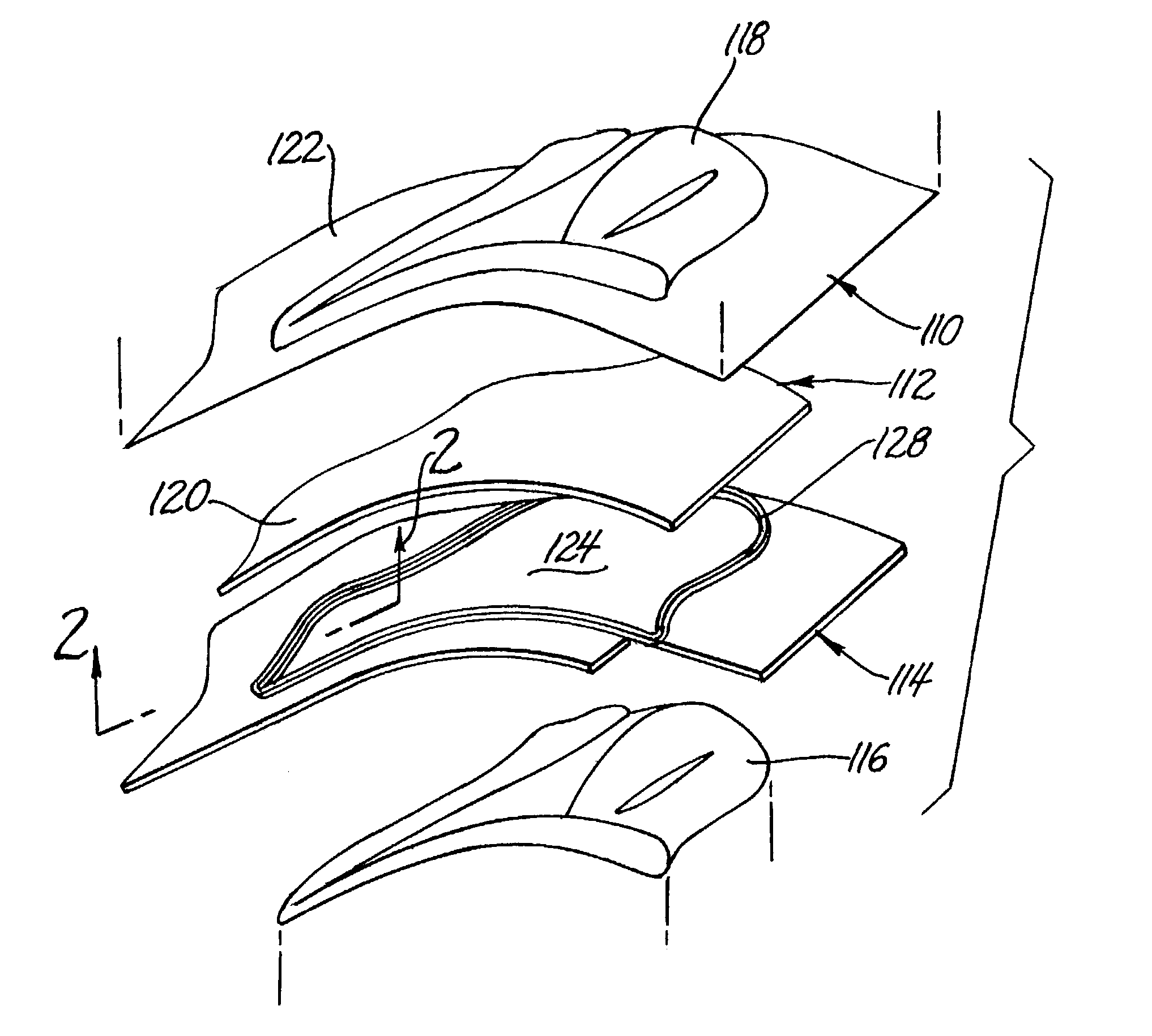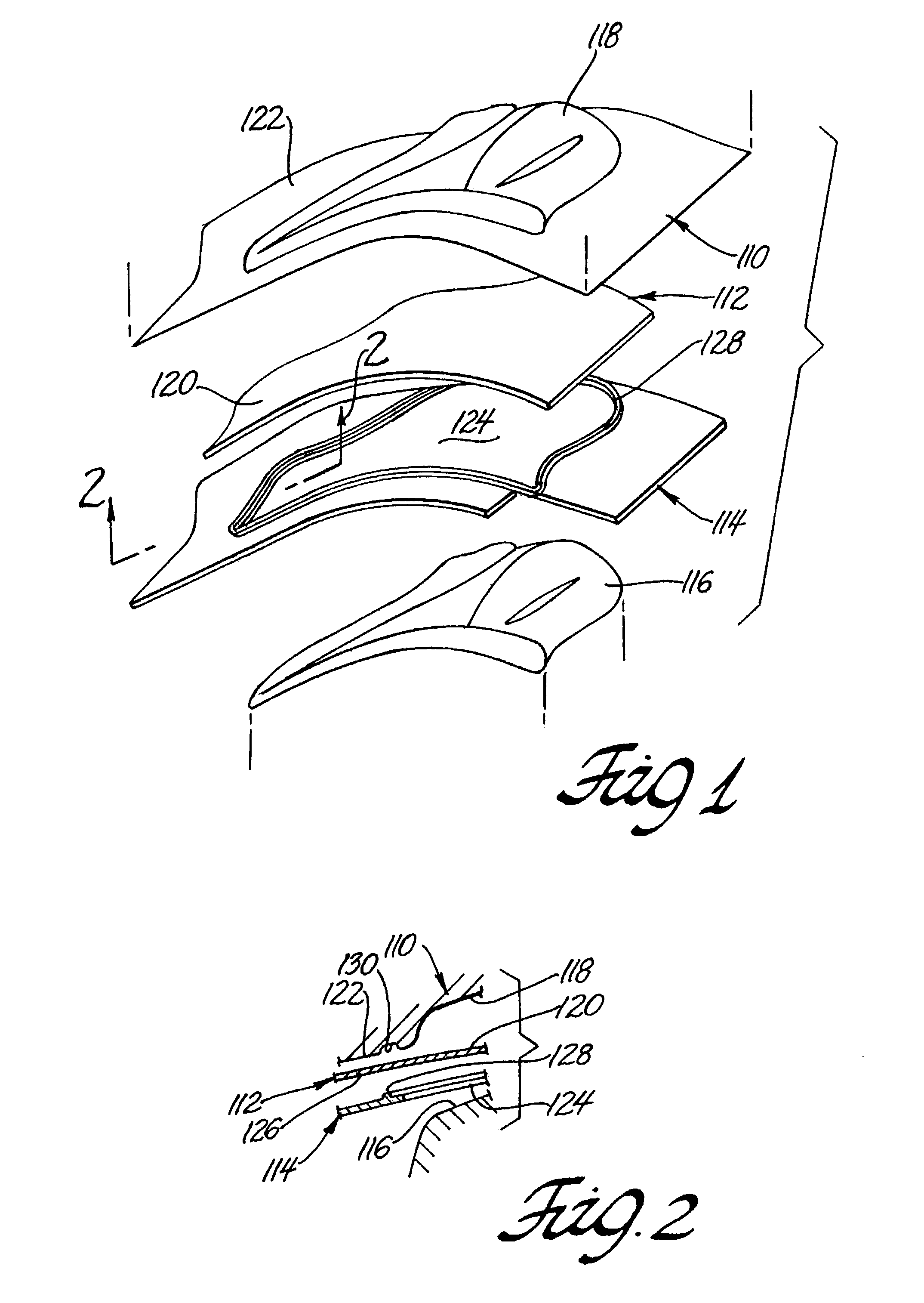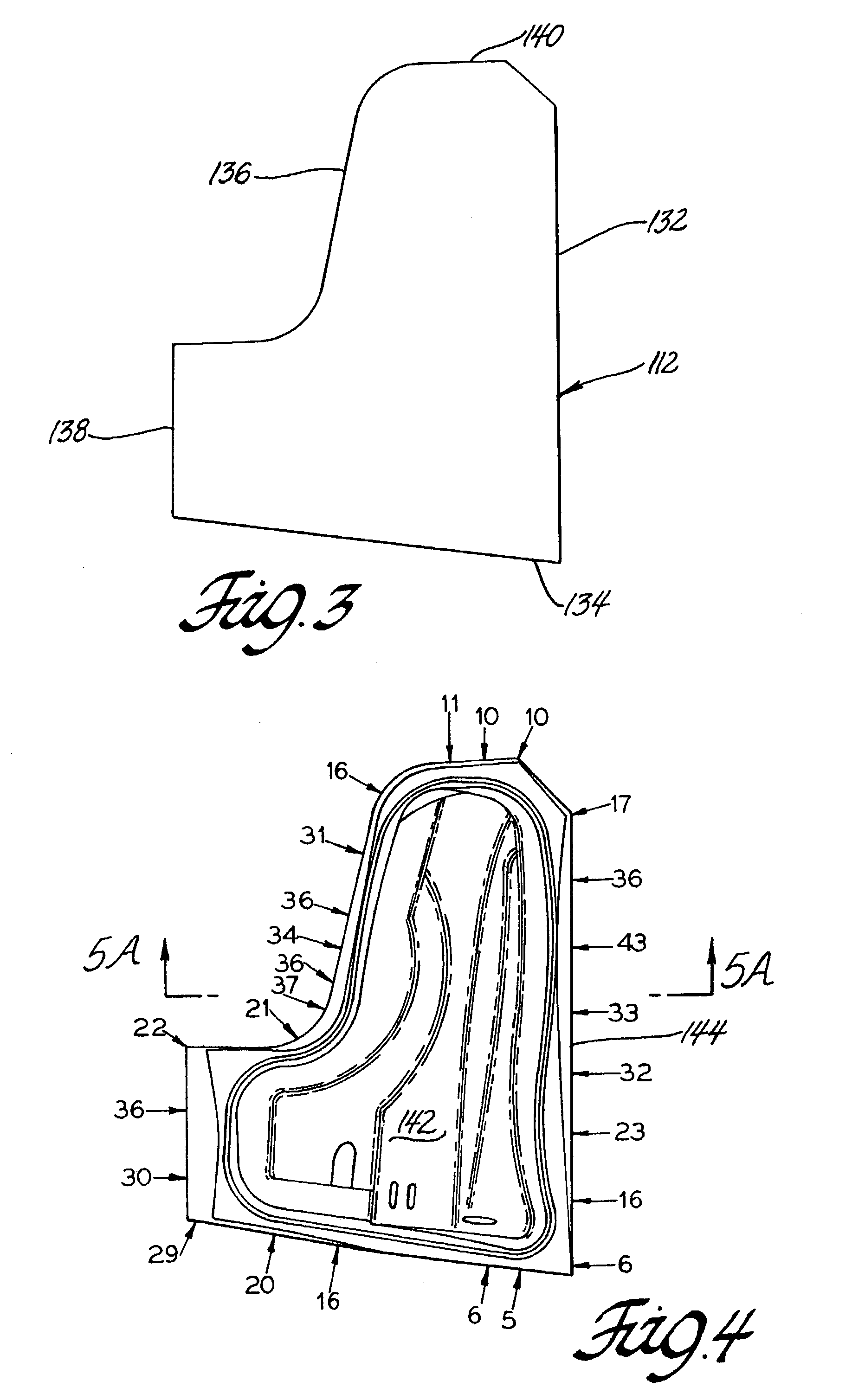Draw-in map for stamping die tryout
- Summary
- Abstract
- Description
- Claims
- Application Information
AI Technical Summary
Benefits of technology
Problems solved by technology
Method used
Image
Examples
Embodiment Construction
[0022]The practice of the invention is illustrated in connection with the stamping of an automotive vehicle fender outer panel. The fender panel may be stamped using a suitable low carbon steel metal blank or aluminum alloy blank, or the like. A shape for the fender is conceived by automotive designers. The design is transcribed into mathematically based dimensional and spatially locating data for use in computer assisted engineering design of a die set for the stamping of the fender panel. Commercially available computer based programs such as those identified above are used to then design a female die surface and a male punch surface and a binder ring shape suitable for controlling the stamping of the selected sheet metal material. Data concerning the thickness of the sheet metal, its physical properties and its deformation forming characteristics are used in the computer program in the design of the die set. Some panel shapes may require more than one stamping operation and, thus...
PUM
 Login to View More
Login to View More Abstract
Description
Claims
Application Information
 Login to View More
Login to View More - R&D
- Intellectual Property
- Life Sciences
- Materials
- Tech Scout
- Unparalleled Data Quality
- Higher Quality Content
- 60% Fewer Hallucinations
Browse by: Latest US Patents, China's latest patents, Technical Efficacy Thesaurus, Application Domain, Technology Topic, Popular Technical Reports.
© 2025 PatSnap. All rights reserved.Legal|Privacy policy|Modern Slavery Act Transparency Statement|Sitemap|About US| Contact US: help@patsnap.com



